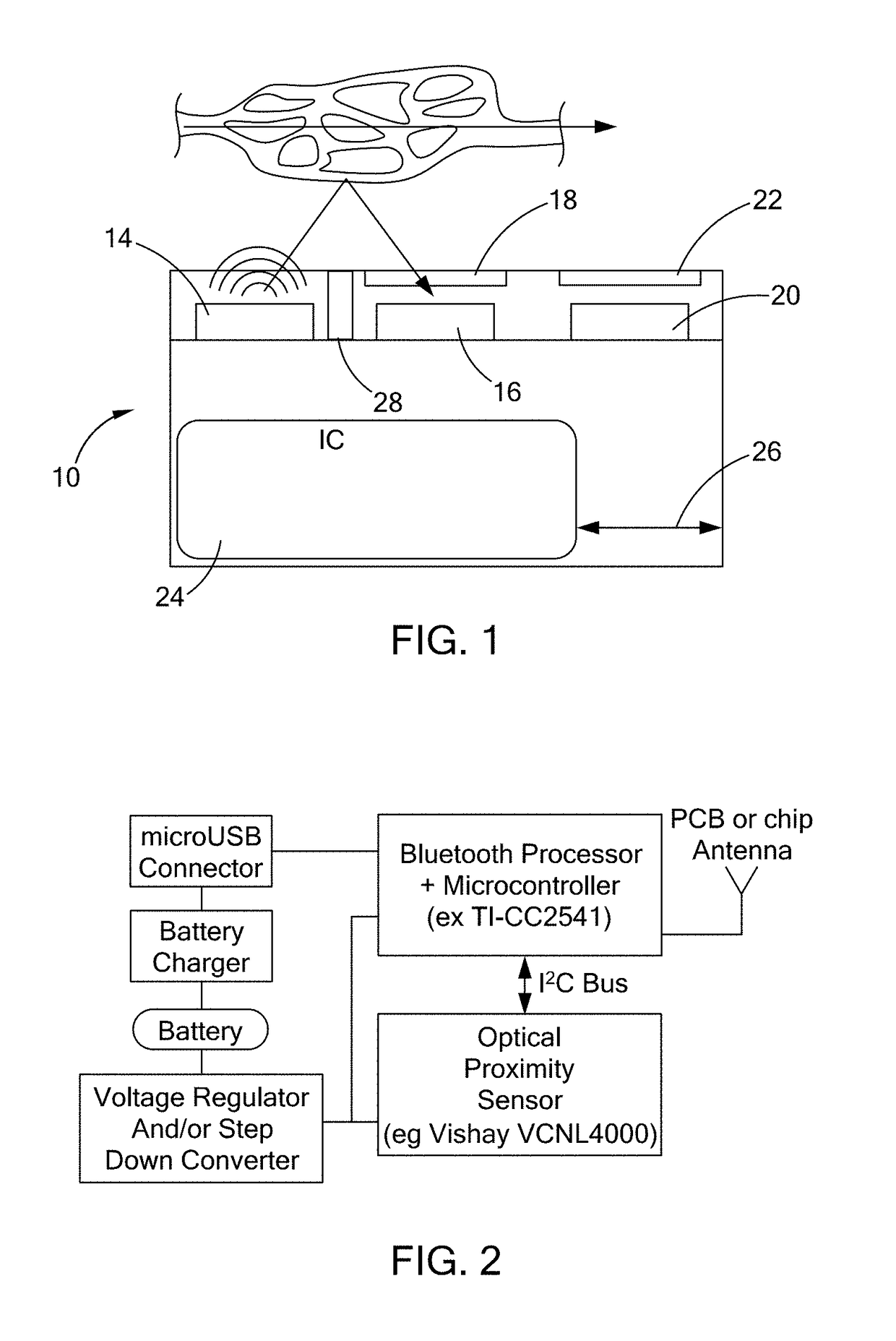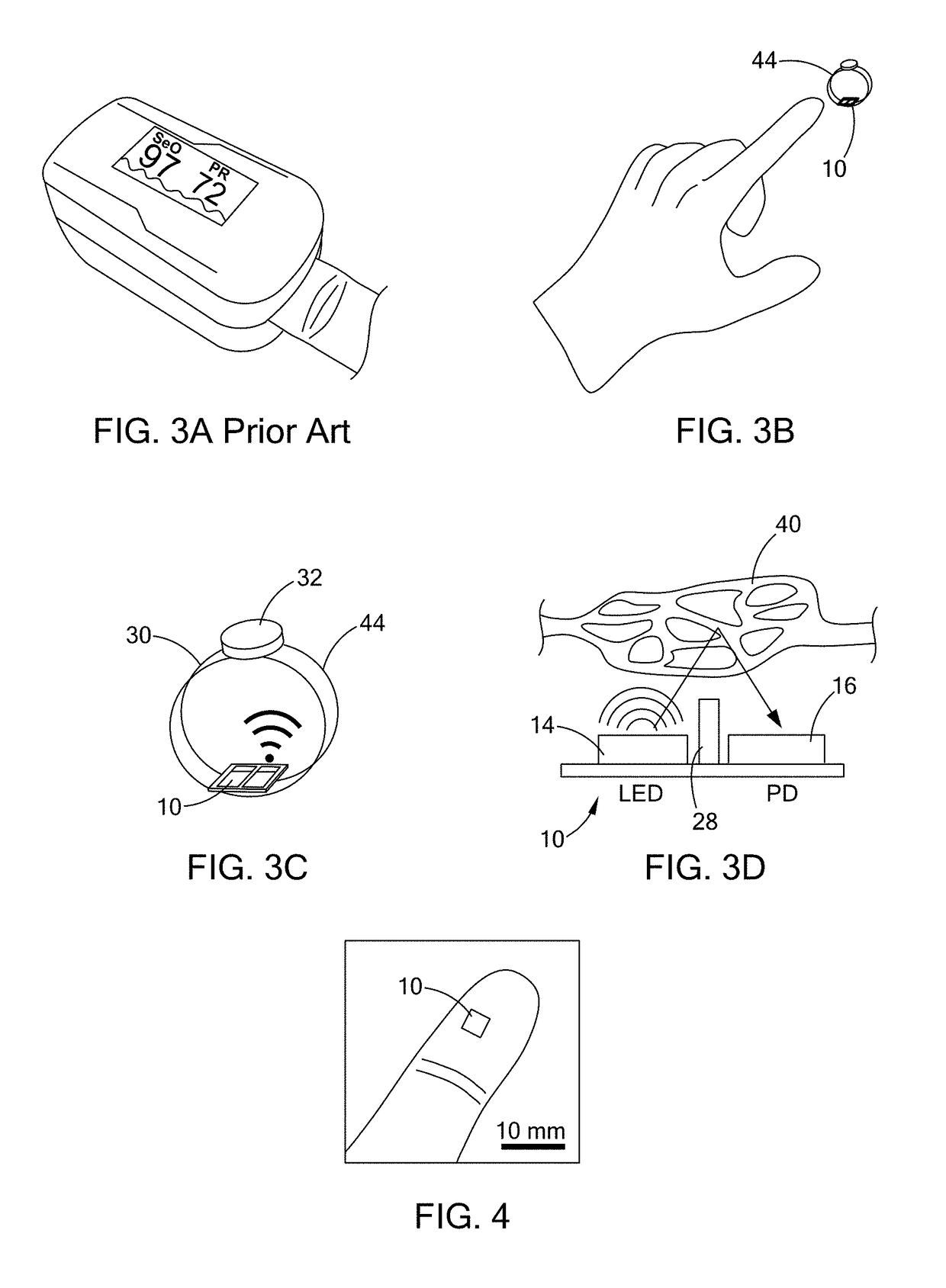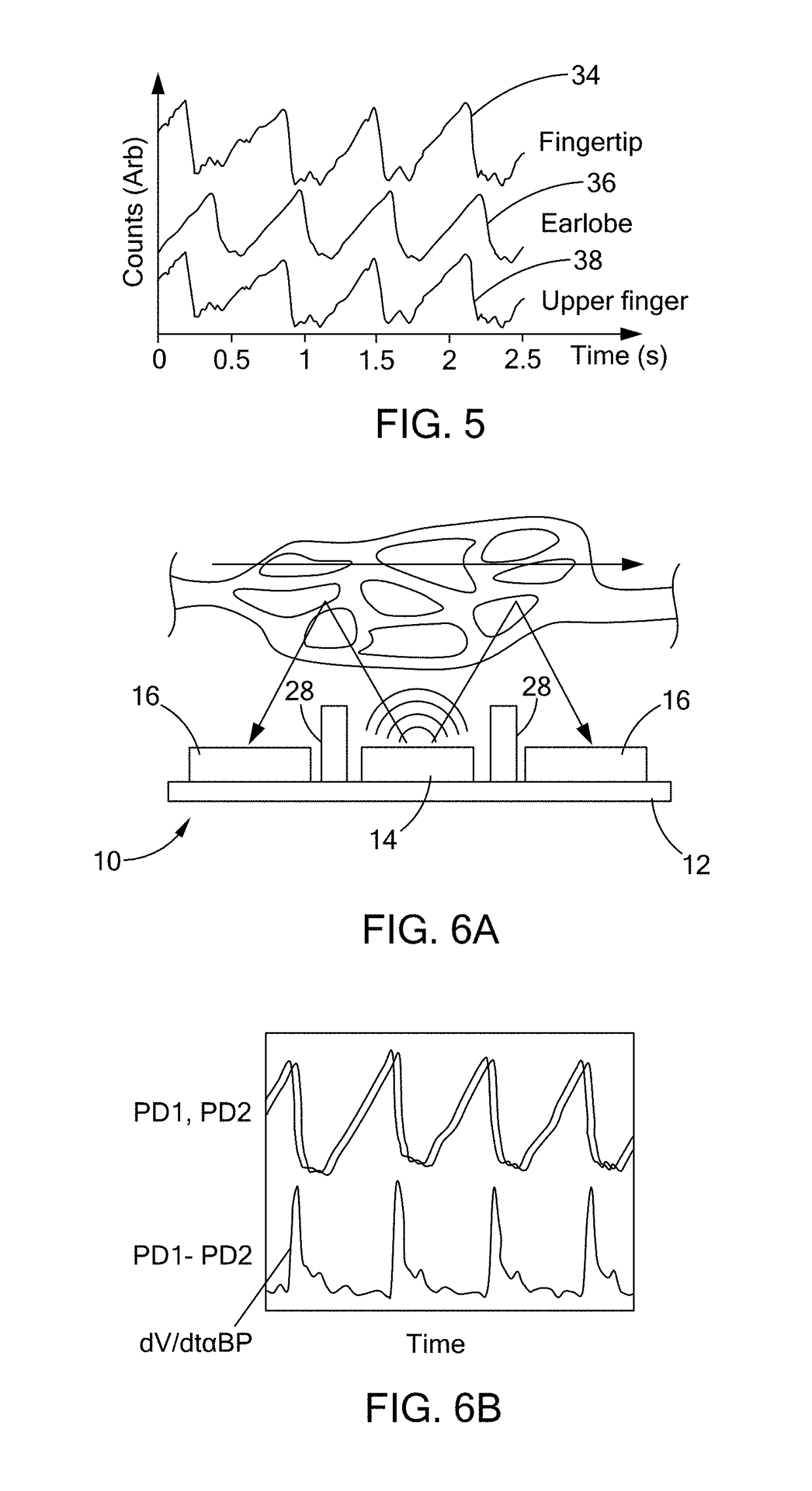Sensor and method for continuous health monitoring
a technology of continuous health monitoring and sensor, which is applied in the field of continuous health monitoring sensors and methods, can solve the problems of inability to meet the needs of 24-hour monitoring, inconvenient use, and still too expensive to be accepted by health care providers. , to achieve the effect of rapid, widespread growth of smart phones, and low cos
- Summary
- Abstract
- Description
- Claims
- Application Information
AI Technical Summary
Benefits of technology
Problems solved by technology
Method used
Image
Examples
Embodiment Construction
[0034]This invention includes new technologies for simultaneously sensing heart rate, blood pressure and pulse oximetry. These technologies can be combined in one sensor. The blood pressure may be indirectly measured using pulse wave velocity by placing several sensors in different locations along an artery. In this manner, vascular conditions can be detected, such as restricted blood flow.
[0035]In a first approach, this device utilizes electronic optical proximity sensors (OPS) 10 to sense a patient's heart rate. Optical proximity sensors, also called light beam sensors, detect distance by measuring the magnitude of light reflected from an object. Variations of OPS are widely used for non-contact distance measurement in a variety of applications. In smart phones, for example, OPS detect when a phone is placed in a pocket, triggering touch-screen locking. In factory robotics, OPS are used for motion feedback control. In many industrial and consumer applications, OPS serve as touchle...
PUM
 Login to View More
Login to View More Abstract
Description
Claims
Application Information
 Login to View More
Login to View More - R&D
- Intellectual Property
- Life Sciences
- Materials
- Tech Scout
- Unparalleled Data Quality
- Higher Quality Content
- 60% Fewer Hallucinations
Browse by: Latest US Patents, China's latest patents, Technical Efficacy Thesaurus, Application Domain, Technology Topic, Popular Technical Reports.
© 2025 PatSnap. All rights reserved.Legal|Privacy policy|Modern Slavery Act Transparency Statement|Sitemap|About US| Contact US: help@patsnap.com



